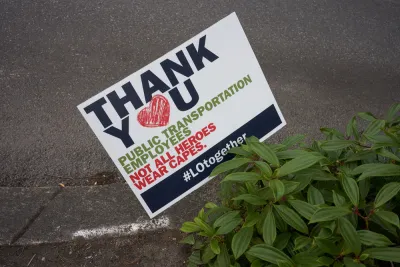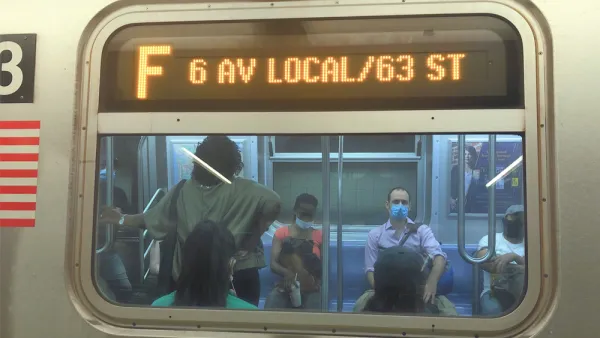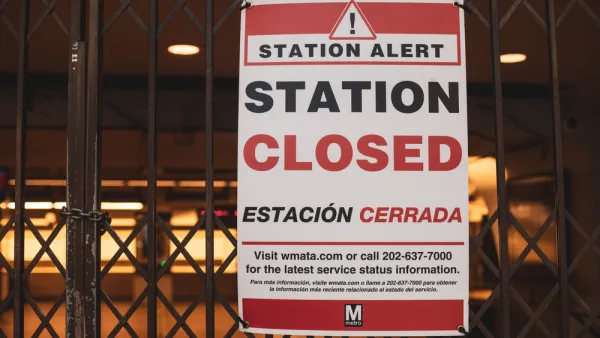Riders who rely most on public transit are suffering the worst consequences of the cuts to service during the fiscal belt tightening of the coronavirus pandemic.

Pranshu Verma reports on the state of public transit service around the country as the fiscal and ridership fallout from the pandemic deepens:
Public transit leaders across the country have issued dire warnings to Congress, saying that the first $25 billion in aid they received in March is quickly drying up, and they need more — otherwise their systems will go into a “death spiral.”
As public transit agencies feel the pain of declining revenues from fare payments as well as the other sources of funding, like sales taxes, for example, it's the most vulnerable users who are suffering the most, according to Verma.
But as service cuts to the United States’ bus, rail and subway systems start to happen, experts say it is the nation’s low-income residents, people of color and essential workers bearing the brunt. Many of them feel the congressional gridlock is completely ignoring their plight.
The article includes anecdotes from New Orleans about the plight of residents who depend on public transit to access essential services like grocery stores and medical care, but residents of cities all over the country are experiencing similar consequences.
Meanwhile, according to Verma, the U.S. Senate seems intent not to pass a stimulus package that would provide further funding to transit agencies around the country. The U.S. House of Representatives approved the HEROES Act in May, although transit advocates have criticized that bill, as well as the predecessor CARES Act, for spending too much on car-centric projects and reinforcing the funding status quo.
FULL STORY: ‘We’re Desperate’: Transit Cuts Felt Deepest in Low-Income Areas

National Parks Layoffs Will Cause Communities to Lose Billions
Thousands of essential park workers were laid off this week, just before the busy spring break season.

Retro-silient?: America’s First “Eco-burb,” The Woodlands Turns 50
A master-planned community north of Houston offers lessons on green infrastructure and resilient design, but falls short of its founder’s lofty affordability and walkability goals.

Delivering for America Plan Will Downgrade Mail Service in at Least 49.5 Percent of Zip Codes
Republican and Democrat lawmakers criticize the plan for its disproportionate negative impact on rural communities.

Test News Post 1
This is a summary

Test News Headline 46
Test for the image on the front page.

Balancing Bombs and Butterflies: How the National Guard Protects a Rare Species
The National Guard at Fort Indiantown Gap uses GIS technology and land management strategies to balance military training with conservation efforts, ensuring the survival of the rare eastern regal fritillary butterfly.
Urban Design for Planners 1: Software Tools
This six-course series explores essential urban design concepts using open source software and equips planners with the tools they need to participate fully in the urban design process.
Planning for Universal Design
Learn the tools for implementing Universal Design in planning regulations.
EMC Planning Group, Inc.
Planetizen
Planetizen
Mpact (formerly Rail~Volution)
Great Falls Development Authority, Inc.
HUDs Office of Policy Development and Research
NYU Wagner Graduate School of Public Service




























